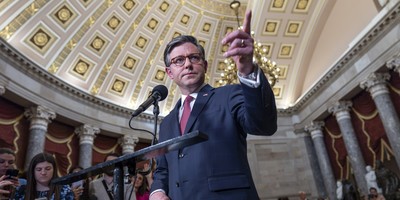Here we are, in the last week of February, discussing the extension of unemployment benefits. Again. Wasn’t Groundhog Day supposed to be on February 2?
Passed last week as part of a comprehensive payroll tax cut/doc fix/general handout bill, Congress also moved to extend unemployment benefits. That's hardly a surprise, given the reluctance of fiscal conservatives to take any stand that could be construed as incentives to out-of-work voters.
While extending the enhanced federal unemployment program, the bill will scale back the length of time that out-of-work individuals can receive unemployment benefits, from the previously outrageous 99 weeks (that’s nearly two years, for people keeping score at home) to a slightly more modest 69 weeks (that’s still over one year and four months). In addition, two measures were added in order to require recipients to actively look for jobs (that wasn’t mandatory before?!) and enables states to drug test some applicants. After all, we don’t want to make it too easy to receive free money, do we?
This whole debate brings to mind the old adage “tax what you want less of, and subsidize what you want more of?” Based on our unemployment insurance policy, it seems as a nation, we want… more unemployed. Brilliant.
Bear in mind, of course, that although the January 2012 unemployment report that came out a few weeks ago was a slight improvement over the past few months, the news isn’t all good. According to the Bureau of Labor Statistics, 2.8 million “marginally attached” workers – defined as those who wanted and were available for work, and had searched for a job in the past 12 months – were not counted in unemployment figures, as they hadn’t looked for work in the past four weeks. Add those people to the statistics, and suddenly, the unemployment rate jumps above 10 percent. Not so hot now, are we?
Recommended
In addition, the underemployed rate – defined as workers who are working fewer hours than they’d like, or who are overqualified for their current position – remains at 15.1 percent. Sure, that’s down from 16.1 percent in January 2011… but bear in mind that the underemployment rate was 8 percent in 2007. We’re not out of the woods yet by a long shot.
Keynesian economists insist that the unemployed need this money because they quickly spend it.... and that stimulates the economy. This theory overlooks one small problem:
The money has to come from somewhere.
As the Cato Institute’s Alan Reynolds notes:
"Whether the government pays people to work or to stay on the dole, it has to get the money by taxing, borrowing or printing money — all of which reduce real income and employment opportunities in the private sector. To imagine that borrowing from Peter to pay Paul is a way to create or save Paul’s job is to forget that Peter expects his money back with interest."
Aside from the “how do we pay for it” dilemma, the unseen consequences of paying people to not work are numerous – including the loss of marketable skills, damage to long-term job prospects (quite honestly, it looks really bad to be out of work for two years), and diminished self-esteem. And dependency begets further dependency, as individuals often end up on other government assistance programs like food stamps and Medicaid, while collecting unemployment benefits. With that much cash coming in from the government, suddenly an entry-level job where you have to pay for those things out of your paycheck starts to look a lot less palatable.
Although it seems like a “kind” thing to do, extending unemployment benefits will lead to a host of new problems that our country can’t handle right now.
The best way to help the unemployed is through creating jobs for them – real, sustainable jobs, not temporary seasonal hiring. With businesses paralyzed by fear over what new regulations will be placed on them, and what the tax code will look like (after all, someone’s going to have to pay the bill for all this government spending!), it’s no wonder that American companies aren’t hiring. Let’s provide some economic certainty – not feel-good gimmickry.

























Join the conversation as a VIP Member